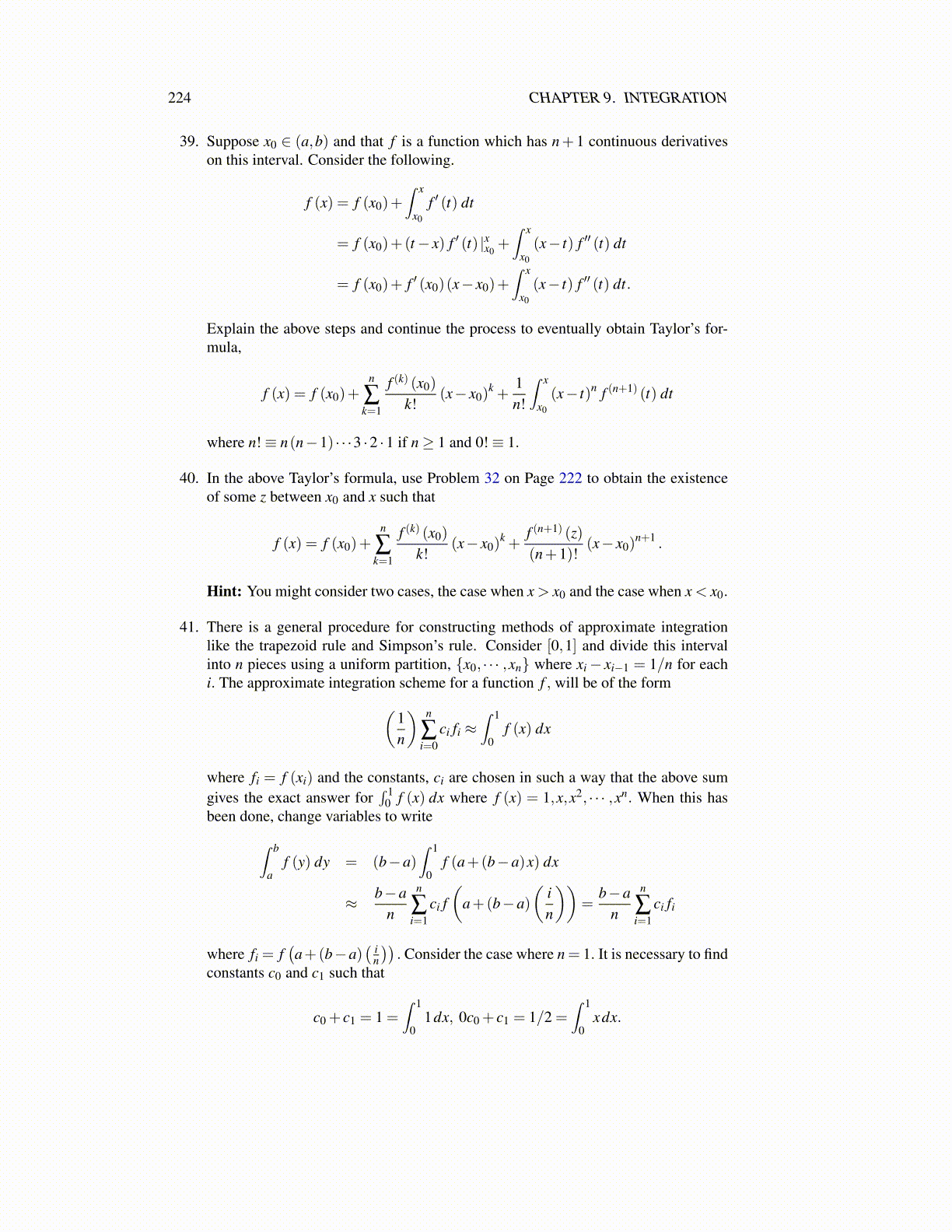
224 CHAPTER 9. INTEGRATION
This is called the second mean value theorem for integrals. Hint: Use integration byparts. ∫ b
agd f =−
∫ b
af dg+ f (b)g(b)− f (a)g(a)
Now use the first mean value theorem, the result of Theorem 9.9.1 to substitute some-thing for
∫ ba f dg and then simplify.
46. Generalize the result of Theorem 9.9.4 to the situation where α and β are only ofbounded variation.
47. This problem is in Apostol [2]. Explain why whenever f is continuous on [a,b]
limn→∞
b−an
n
∑k=1
f(
a+ k(
b−an
))=∫ b
af dx.
Apply this to f (x) = 11+x2 on the interval [0,1] to obtain the very interesting formula
π
4 = limn→∞ ∑nk=1
nn2+k2 .
48. Suppose f : [a,b]×(c,d)→R is continuous. Recall the meaning of the partial deriva-tive from calculus,
∂ f∂x
(t,x)≡ limh→0
f (t,x+h)− f (t,x)h
Suppose also ∂ f∂x (t,x) exists and for some K independent of t,∣∣∣∣∂ f
∂x(t,z)− ∂ f
∂x(t,x)
∣∣∣∣< K |z− x| .
This last condition happens, for example if ∂ 2 f (t,x)∂x2 is uniformly bounded on [a,b]×
(c,d) . (Why?) Define F (x) ≡∫ b
a f (t,x)dt. Take the difference quotient of F andshow using the mean value theorem that F ′ (x) =
∫ ba
∂ f (t,x)∂x dt. Is there a version of
this result with dt replaced with dα where α is an increasing function? How aboutα a function of bounded variation?
49. I found this problem in Apostol’s book [2]. This is a very important result andis obtained very simply by differentiating under an integral. Read it and fill in
any missing details. Let g(x) ≡∫ 1
0e−x2(1+t2)
1+t2 dt and f (x) ≡(∫ x
0 e−t2dt)2
. Note
∂
∂x
(e−x2(1+t2)
1+t2
)=−2xe−x2(1+t2) and
∂ 2
∂x2
(e−x2(1+t2)
1+ t2
)=−2e−x2(1+t2) +4x2e−x2(1+t2) +4x2e−x2(1+t2)t2
which is bounded for t ∈ [0,1] and x ∈ (−∞,∞) . Explain why this is so. Also showthe conditions of Problem 48 are satisfied so that
g′ (x) =∫ 1
0
(−2xe−x2(1+t2)
)dt.